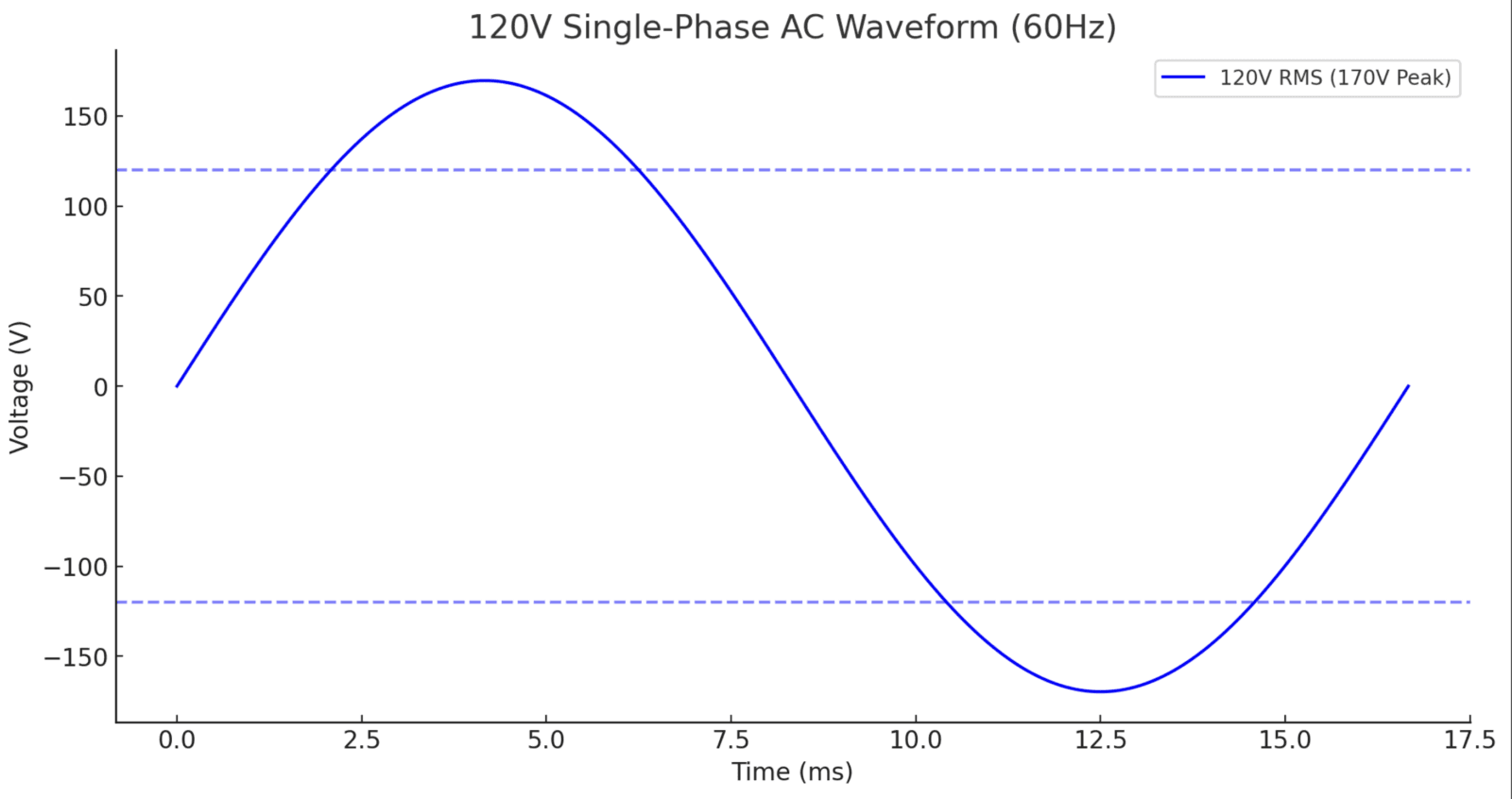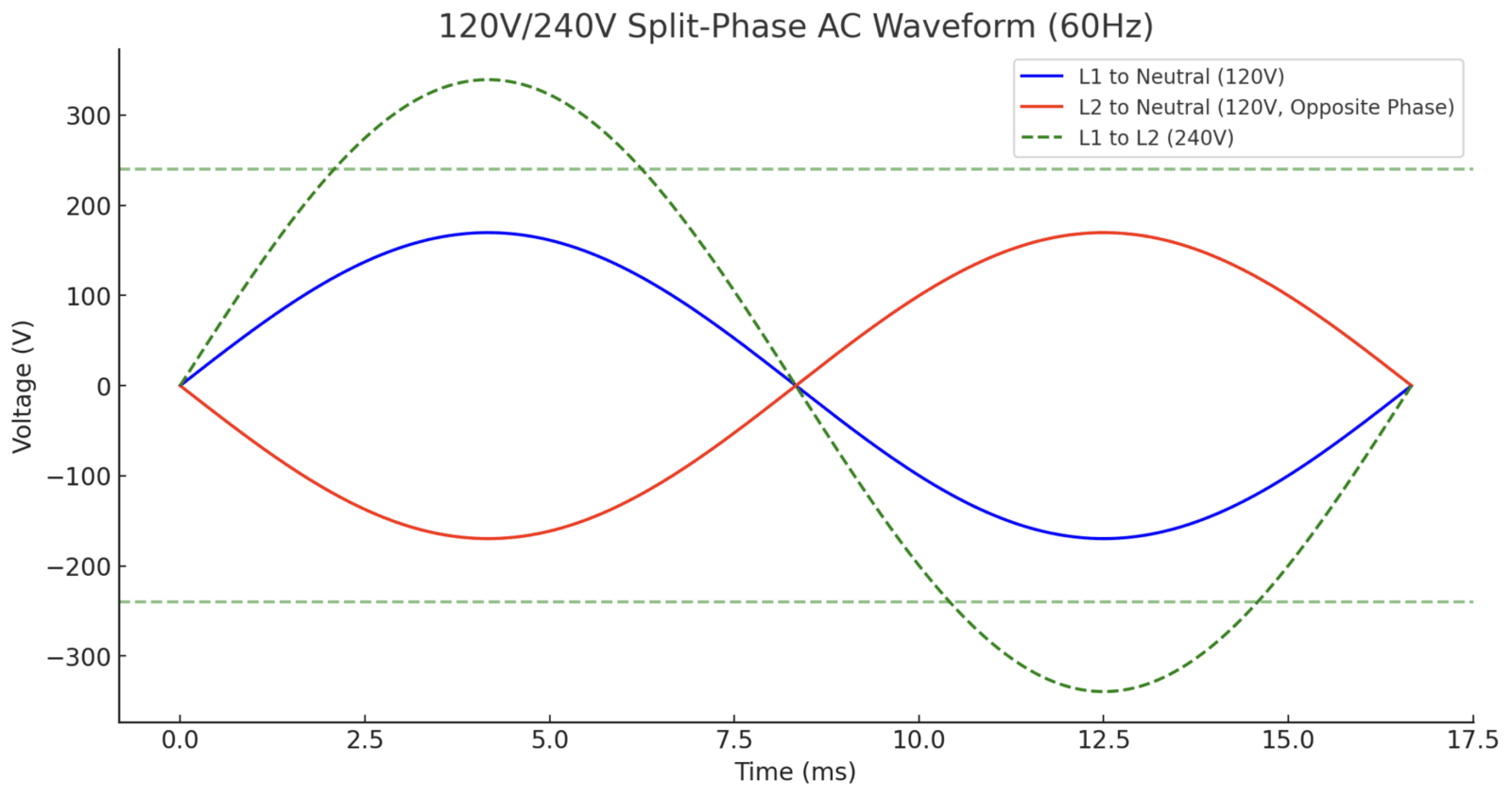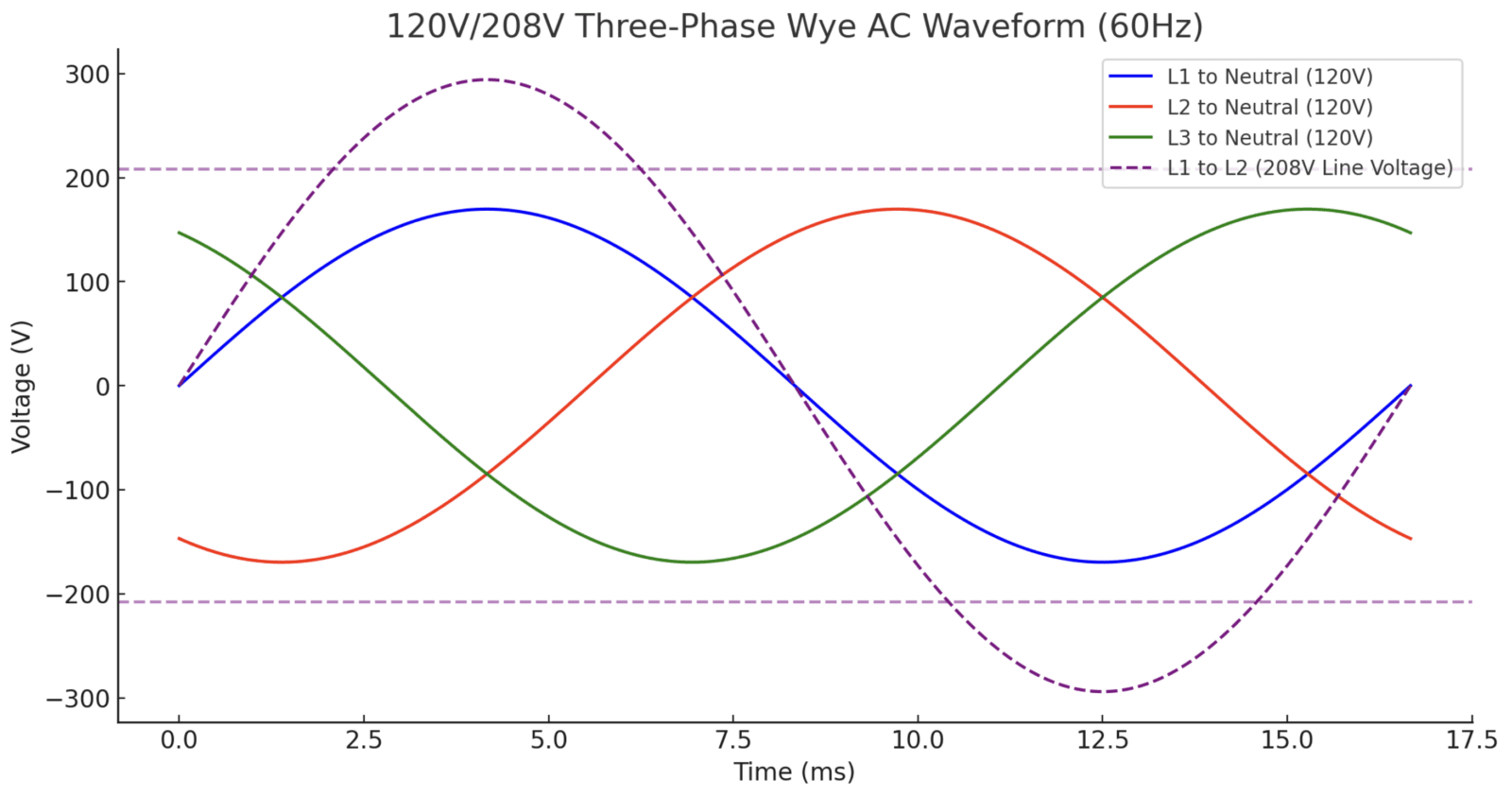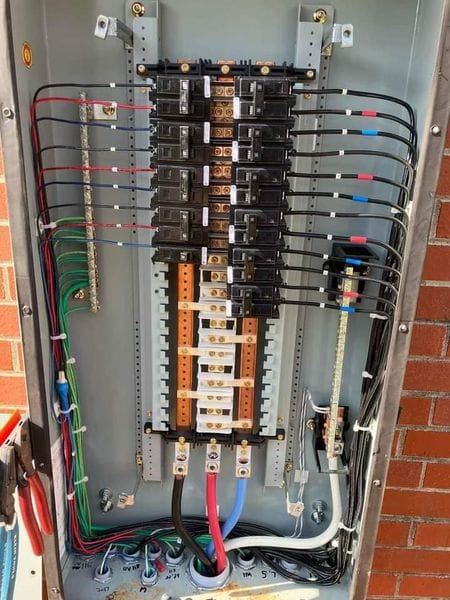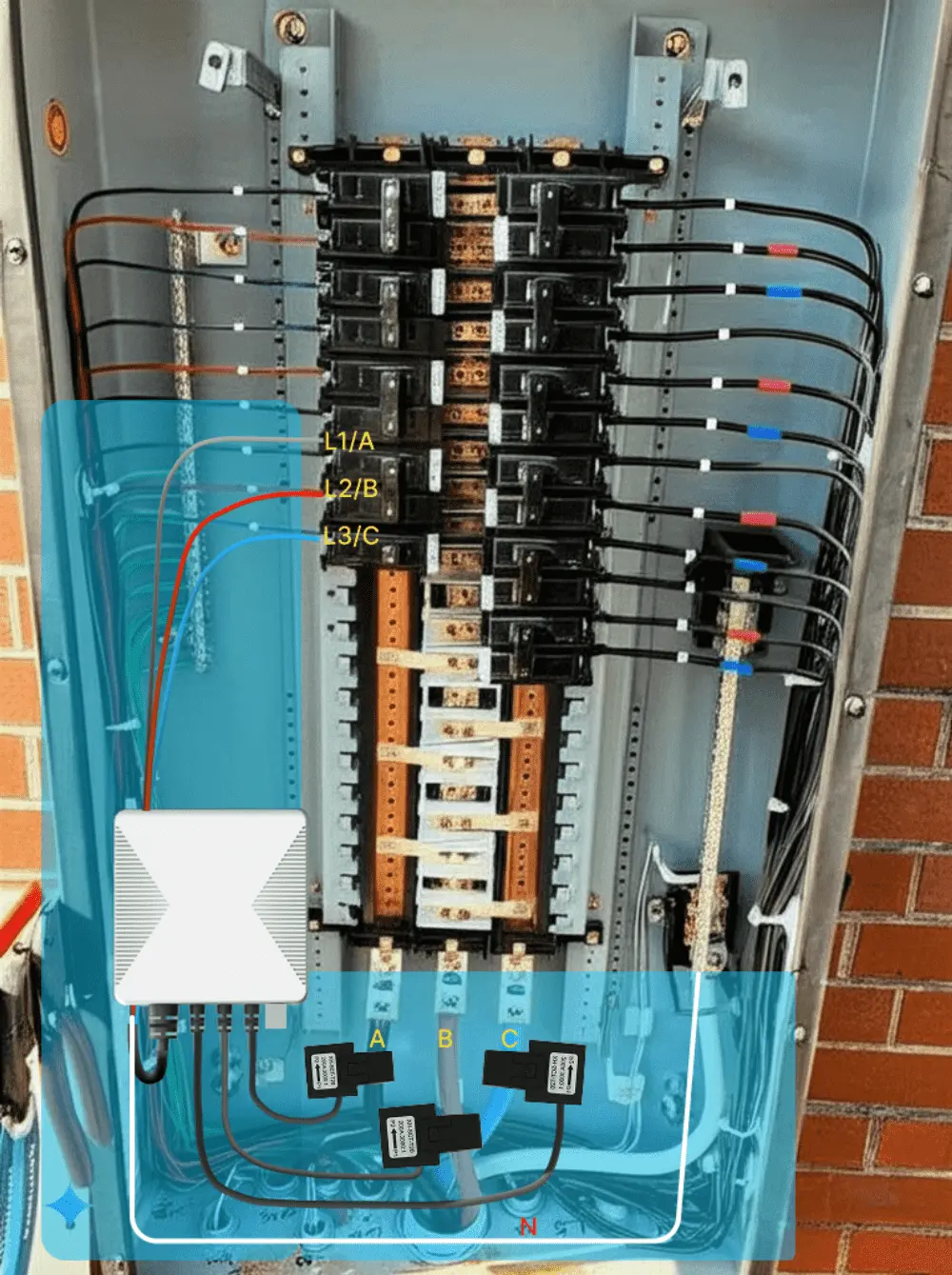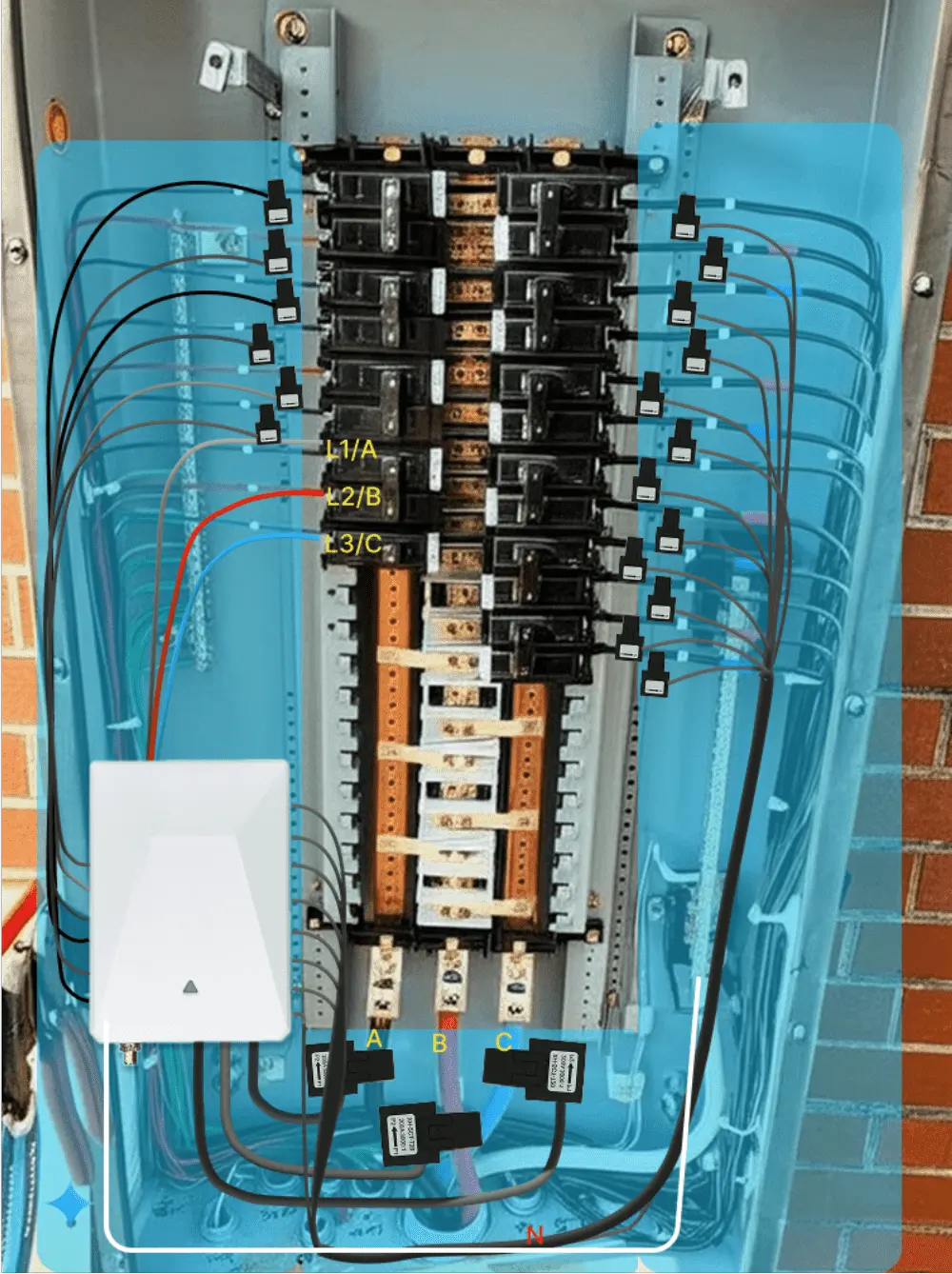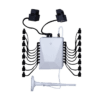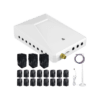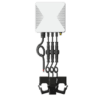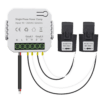
When it comes to home heating systems, baseboard heaters are a popular choice for many homeowners looking for quiet operation, space efficiency, and targeted heating in individual rooms. However, if you’re still controlling your baseboard heaters with traditional, manually operated thermostats, you may be missing out on significant energy savings and convenience. Upgrading to a Smart Thermostat for Baseboard Heaters can be a game-changer, especially for those seeking improved comfort, better energy management, and remote control capabilities.
But how do you choose from the growing list of smart thermostats on the market? And what specific features should you look for to ensure they’re compatible with electric baseboard heaters? In this blog post, we’ll dive into the top five factors you should consider before investing in a new smart thermostat for your home. By keeping these points in mind, you’ll be able to make a well-informed choice that not only fits your budget but also maximizes comfort and long-term energy savings.
1. Compatibility with Baseboard Heaters
Understanding Electric Baseboard Heaters
Electric baseboard heaters typically operate on a high-voltage system (often 120V or 240V), which is quite different from the 24V low-voltage wiring found in many forced-air furnaces or boiler systems. Because of this voltage difference, not all “smart” thermostats are immediately suitable for baseboard heaters. Some popular brands of smart thermostats—commonly designed for low-voltage HVAC systems—won’t work directly with high-voltage lines.
High-Voltage vs. Low-Voltage Thermostats
- High-voltage thermostats (Line-voltage)
These thermostats are built to handle the 120V or 240V electric current used by baseboard heaters. If you have line-voltage electric baseboard systems, you’ll need a Smart Thermostat for Baseboard Heaters that specifically supports high-voltage wiring. - Low-voltage thermostats (24V)
Most mainstream smart thermostats, such as those designed for central HVAC, are low-voltage (24V) devices. If your home uses a standard forced-air system or a heat pump, these work well. However, they are generally not plug-and-play compatible with line-voltage systems without specialized relays or adapters.
Checking Thermostat Specifications
Before purchasing any thermostat, carefully check its technical specifications:
- Voltage Rating: Confirm it supports 120V or 240V, depending on your system.
- Current (Amps) Capacity: Ensure it can handle the amperage your baseboard heater requires.
- Wiring Requirements: Some smart thermostats need a neutral wire, a common wire (C-wire), or specific wiring configurations. Verify that your electrical wiring is compatible.
A high-voltage smart thermostat designed for baseboard heaters will typically advertise that feature front and center because it’s a must-have. Make sure you don’t skip this step; choosing an incompatible thermostat can lead to malfunctions, potential damage, or even safety hazards.
2. Connectivity & Control Options
Wi-Fi and App Integration
One of the major selling points of a Smart Thermostat for Baseboard Heaters is the ability to control your home’s temperature remotely. By choosing a thermostat with built-in Wi-Fi, you’ll gain access to a companion mobile application (iOS, Android, or both), where you can:
- Monitor and adjust your home’s temperature from any location.
- Receive energy consumption reports or real-time notifications.
- Set up custom schedules even when you’re away.
This level of connectivity is especially helpful for second homes, vacation properties, or busy professionals who may forget to adjust the thermostat before heading out for the day. With remote access, you can ensure your house is warm and welcoming when you arrive while not wasting energy heating it when you’re away.
Voice Assistant Compatibility
Voice assistant integration is another perk. Thermostats that work with Amazon Alexa, Google Assistant, or Apple HomeKit can be controlled hands-free. If you already have a smart home ecosystem with smart speakers or displays, integrating a voice-activated thermostat can be incredibly convenient:
- Ask Alexa or Google to increase the temperature by a few degrees.
- Automate multiple devices: for example, instruct your smart home to turn down the heat and switch off the lights when you say, “Good night.”
Voice control is both a convenience and an accessibility feature. For people with mobility challenges, being able to change the temperature without physically accessing the thermostat is a significant advantage.
Security and Privacy
Because your thermostat will be connected to your home Wi-Fi network, be mindful of security and privacy features. Look for thermostats that offer:
- Encrypted connections (e.g., WPA2/WPA3 Wi-Fi security).
- Two-factor authentication for your user account.
- Regular firmware updates to patch potential vulnerabilities.
Ensuring the thermostat’s software is consistently updated helps protect your data and keeps your smart home ecosystem secure.
3. Energy Efficiency & Cost Savings
Built-In Energy Monitoring
A prime benefit of upgrading to a Smart Thermostat for Baseboard Heaters is optimizing your energy usage. Many smart thermostats provide detailed reports on how much energy is consumed daily, weekly, or monthly. By monitoring these usage trends, you can identify patterns—like peak heating times or wastage when rooms are unoccupied.
Advanced Features to Reduce Energy Bills
- Adaptive Learning
Some high-end thermostats use machine learning algorithms to learn your schedule and habits. They automatically adjust heating to maintain comfort levels more efficiently. Over time, they refine these patterns and can reduce energy usage considerably. - Eco Modes and Geofencing
Many smart thermostats have an “Eco Mode” or an “Away Mode” that conserves energy when the system senses no one is home. Geofencing uses your phone’s GPS to detect when you leave a certain radius, triggering the system to lower heat, then turning it back up as you approach home. - Optimal Start/Stop
This feature ensures your home reaches a comfortable temperature by a predetermined time. Instead of running the heater at full blast right before you wake up, the system calculates the most efficient way to achieve your target temperature, starting just early enough but no earlier than necessary.
By taking advantage of these advanced capabilities, homeowners typically see a drop in heating costs. Although the initial investment in a smart thermostat may be higher than a simple manual or programmable model, the long-term savings often justify the expense.
4. Programmability & Smart Features
Creating Custom Schedules
Even the simplest programmable thermostats allow you to set distinct temperature schedules for weekdays and weekends. With a Smart Thermostat for Baseboard Heaters, you can often dive deeper:
- Hourly adjustments: Different temperature settings for morning, midday, evening, and night.
- Vacation holds: Override normal schedules when you’re out of town.
- Room-by-room control (if you have multiple thermostats or zoned heating).
Having these granular controls means you can keep living spaces cozy when they’re in use, and let unoccupied areas remain cooler, leading to efficiency gains.
Integration with Other Smart Devices
If you’re already invested in a smart home setup—such as smart lights, security cameras, or door sensors—your thermostat can often integrate seamlessly. This can allow for advanced home automation scenarios:
- Smart Scenes: Automate temperature adjustments when lights turn off, or when your smart lock detects that you’ve left the house.
- Triggered Events: For instance, if a window or door is left open for more than five minutes, your thermostat can be set to automatically shut off or reduce heat to prevent energy waste.
This broader ecosystem connectivity can be a significant selling point, especially for tech-savvy homeowners looking to create a cohesive smart home environment.
Learning Algorithms and AI
Some smart thermostats incorporate AI-driven features to learn your comfort preferences and daily routines. Over time, these thermostats can automatically create the perfect schedule without requiring much manual input. They’ll factor in details such as:
- Time of day
- Seasonal changes
- Occupancy patterns
These sophisticated algorithms can further optimize your heating system, ensuring you only use energy when—and where—it’s needed.
5. Installation & User-Friendliness
DIY vs. Professional Installation
When dealing with line-voltage electric systems, safety is paramount. While some brands offer user-friendly installation kits and detailed instructions, others may recommend or even require professional installation. Before deciding, consider:
- Electrical Know-How: Are you comfortable working with high-voltage wiring? If not, hiring a qualified electrician is the safest option.
- Local Building Codes: Some municipalities require a licensed professional to handle electrical work.
- Warranty Requirements: Certain manufacturers only honor product warranties if the thermostat is installed by a certified technician.
Intuitive User Interface
Once it’s installed, you’ll want a user-friendly thermostat interface. Look for models with a clear, backlit display, easy-to-navigate menus, and well-labeled buttons or touchscreen controls. If you have multiple people in the household, ensure that everyone—tech-savvy or not—feels comfortable using it.
App Design & Ease of Use
Since most smart thermostats rely heavily on a companion smartphone app, a poorly designed app can undermine the entire experience. Before purchasing, read user reviews or watch demo videos to see:
- Setup Process: How straightforward is it to pair the thermostat with your Wi-Fi network?
- Menu Layout: Is the app logically organized with clear scheduling and control features?
- Reliability: Does it frequently lose connection or crash, according to user reports?
Selecting a thermostat backed by a consistently updated app can make all the difference between a seamless, pleasant experience and endless frustration.
Additional Considerations
Aesthetics and Design
While functionality should always take precedence, aesthetics can also matter. Some thermostats boast a sleek, modern design that blends well with contemporary home decor. If you plan on installing multiple smart thermostats throughout your home, a visually appealing device can complement your interior design rather than clash with it.
Brand Reputation and Customer Support
Investing in a well-reviewed brand with reliable customer support can save you a lot of headaches down the line. High-voltage smart thermostats are a niche product, so you want to ensure the company stands behind its product. Look for:
- Warranty Length: A longer warranty often indicates a company’s confidence in its product.
- Customer Service Channels: Is there a hotline, email, live chat, or community forum for troubleshooting?
- User Reviews and Testimonials: Hearing from other customers with baseboard heaters can shed light on real-world performance and issues.
Budget and Long-Term Savings
Smart thermostats specifically designed for high-voltage baseboard heaters can be more expensive upfront compared to basic manual options. However, they also offer greater potential for energy savings. If your heating costs are significant, investing in a high-quality smart thermostat can pay off by reducing your monthly electricity bill. Additionally, certain utility companies and government agencies provide rebates or incentives for installing energy-efficient devices—check for any applicable programs in your region.
FAQs
1. Do Smart Thermostats for Baseboard Heaters Really Save Money?
Yes, installing a Smart Thermostat for Baseboard Heaters can lead to notable energy savings. By offering precise temperature control, scheduling, and remote adjustments, smart thermostats reduce unnecessary heating when you’re asleep, out of the house, or occupying only certain rooms. Features like eco modes, geofencing, and adaptive learning optimize these savings even more.
2. Can I Install a Smart Thermostat Myself?
It depends on your electrical knowledge and comfort level with high-voltage wiring. Some thermostats are marketed as DIY-friendly and include comprehensive instructions. However, many homeowners opt for professional installation for safety and compliance with local electrical codes. If you’re unsure, consult a licensed electrician—particularly if you’re dealing with 240V wiring.
3. Are There Specific Brands Known for High-Voltage Smart Thermostats?
While many well-known thermostat brands (like Nest or Ecobee) primarily cater to low-voltage systems, there are brands—Mysa, Stelpro, Sinope, and others—that specialize in or offer lines specifically for electric baseboard heaters. When in doubt, always check the product description to confirm it supports line-voltage systems.
4. How Do I Know If My Baseboard Heater Requires 120V or 240V?
In most cases, baseboard heaters are 240V, but it’s not a universal rule. Check the heater’s data plate, your circuit breaker label, or the original installation manuals. An electrician can also measure voltage during an inspection to confirm the specifics.
5. Can I Control Multiple Baseboard Heaters with One Smart Thermostat?
In some setups, a single high-voltage thermostat can control multiple baseboard heaters in the same room or zone, provided the total amperage stays within the thermostat’s rated limit. If you want to control each heater individually—or have zoned heating in different rooms—you’ll likely need multiple thermostats, one for each zone or circuit.
Conclusion
Selecting a Smart Thermostat for Baseboard Heaters involves more than simply picking a popular brand. The high-voltage nature of baseboard systems means that compatibility is paramount, and not every “smart” device will fit the bill. Beyond that, look for thermostats offering robust connectivity (Wi-Fi and voice assistant compatibility), advanced energy-saving features, user-friendly programming, and straightforward installation processes.
By weighing factors such as compatibility, connectivity, energy efficiency, programmability, and installation, you can ensure you’re making an informed purchase decision. A well-chosen thermostat will reward you with improved comfort, tangible cost savings, and a streamlined smart home experience. Whether you’re upgrading a single room or outfitting your entire home, the right smart thermostat can transform the way you heat—and live in—your space.
Ready to take the next step? Explore Smart Baseboard Thermostat: EcoNet-BH | WiFi Scheduling, Voice Control, Programmable Electric Baseboard Heaters Thermostat – Grus.io to see if it meet your choice. With the right choice, you’ll enjoy a cozy, connected home that saves you time, money, and energy in the long run.

